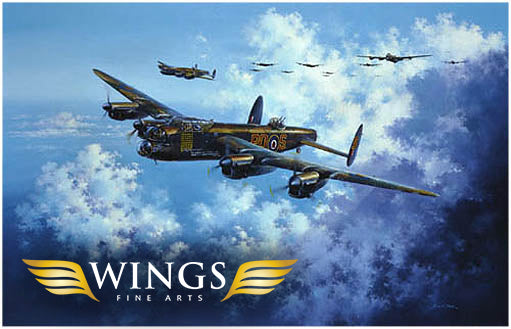Ops on Hold by Richard Taylor - Aviation Art
- Variant: Limited Edition
- In Stock: 20
- Brand: Wings Fine Arts
- Collection: The Lancaster Bomber
Product Specs
Ops on Hold
By Richard Taylor
A TRIBUTE TO THE MEN OF RAF BOMBER COMMAND
March 1944 and heavy snow has settled firmly over the frozen Lincolnshire countryside around RAF Fiskerton. For once the Lancasters of 49 Squadron stand quietly idle at their dispersal points around the airfield’s perimeter. It’s a scene recreated at many other heavy bomber airfields across the east of England and the young airmen who crew these mighty machines now wait patiently for the inevitable thaw that will soon see them in combat again.
For some, however, the future is uncertain. Just a few weeks later, on 30 March 1944, during a raid on Nuremberg, more than 100 bombers would be shot down. In the space of a single night Bomber Command would suffer more men lost than had Fighter Command during the entire Battle of Britain.
Bomber Command flew more than 389,000 sorties from 101 operational bases across the east of England during WWII and the aircrew that undertook these missions came from Britain, Canada, Australia, New Zealand, South Africa, Rhodesia and many countries under Nazi occupation. Every airman was a volunteer and with an average age of just 22 they were forced to grow up quickly, enduring frightening odds and suffering terrible losses - only the Nazi U-Boat force experienced a higher casualty rate.
Of the 125,000 men who served, 55,573 were killed. For every 100 airmen who joined Bomber Command, 45 would lose their lives, 6 would be seriously wounded and 8 made prisoners of war. Yet they resolutely overcame the overwhelming forces stacked against them, including some of the worst flying conditions imaginable and, never flinching from their task, flew until victory was finally achieved.
Overall Print Size: 23¼" wide x 14¼" high
To help commemorate those who served, this evocative edition is personally signed by Pilots and Aircrew who flew Lancasters with Bomber Command during World War II and is issued in support of the Bomber Command and POW Associations.
THE SIGNATURES
Along with the artist Richard Taylor each print is individually signed by three veterans who flew and fought with Bomber Command:
- A/Cdre CHARLES CLARKE OBE - Bomb Aimer with 619 Sqn on Lancasters
- Flt Lt RUSSELL ‘RUSTY’ WAUGHMAN DFC AFC - Pilot with 101 (Special Duties) Sqn on Lancasters
- Flt Lt KEN THOMAS DFC - Pilot with 622 Sqn on Short Stirlings and Lancasters
EDITIONS AVAILABLE
- Limited Edition: 375 prints ($130)
- The Artist Proof: 25 prints ($195)
- The Remarque: 25 prints ($485)
- The Double Remarque Edition: 10 prints ($750)





